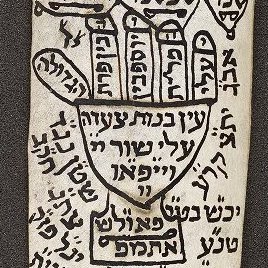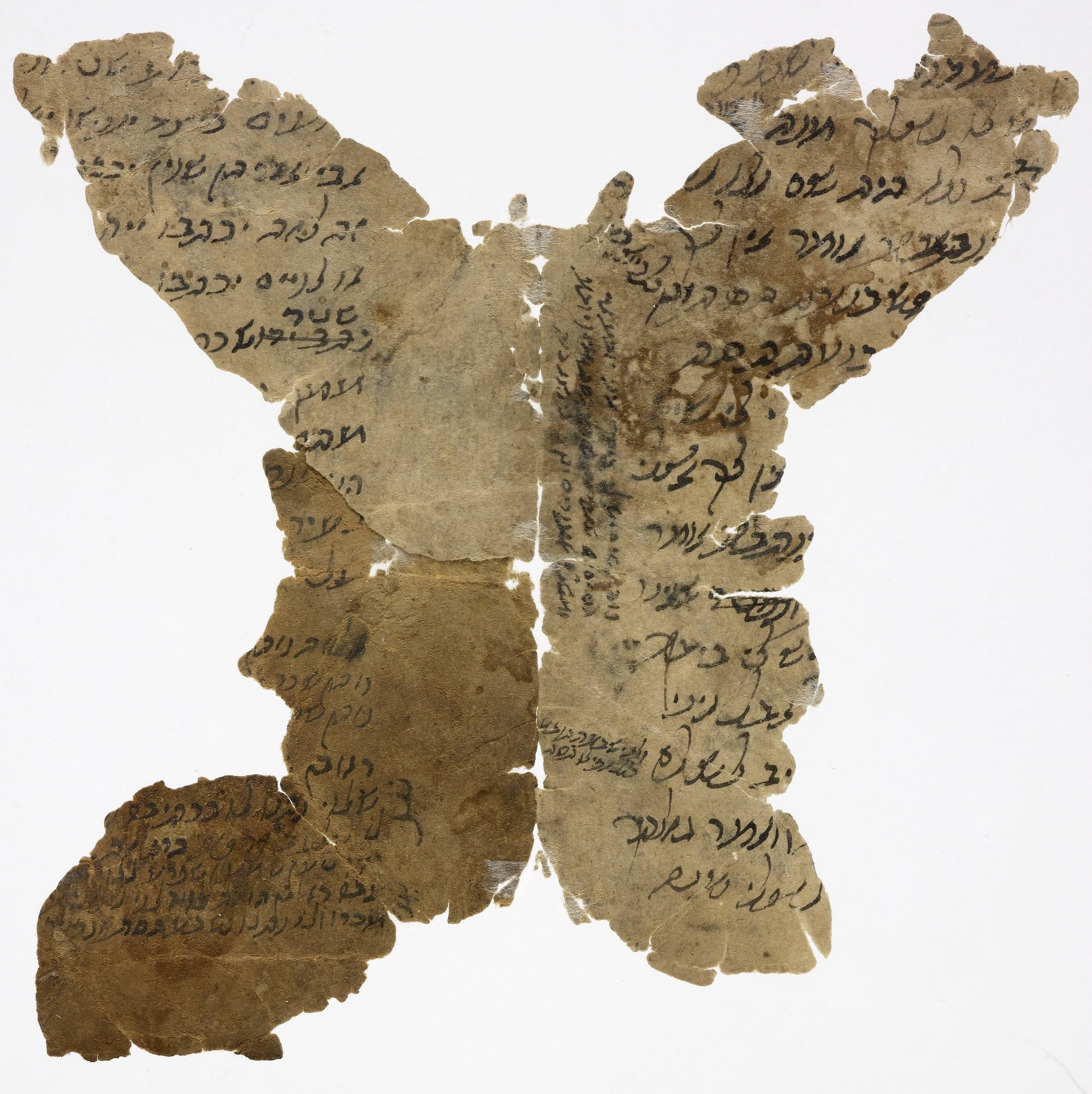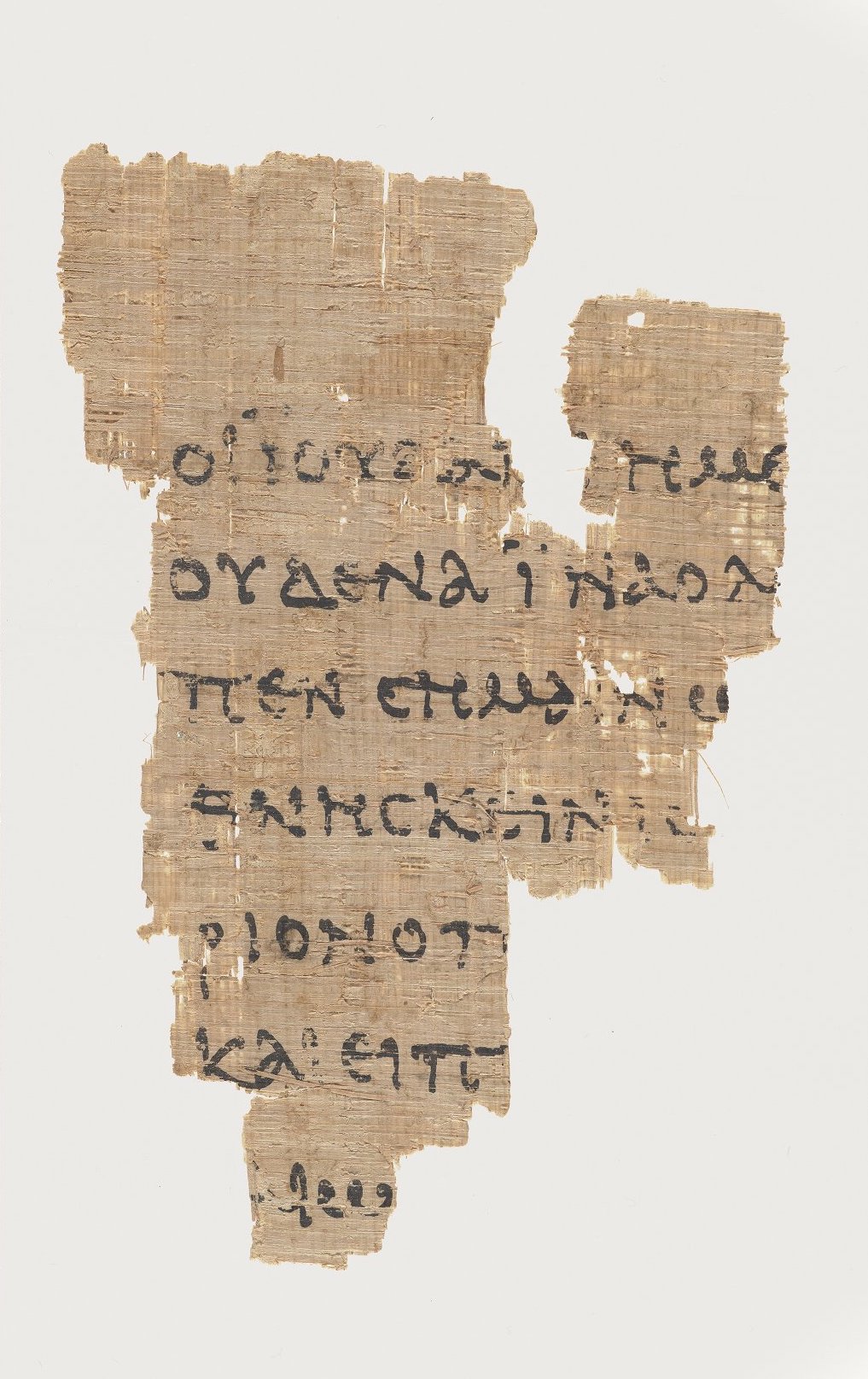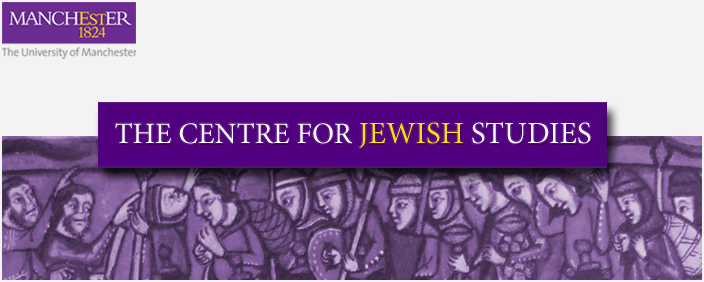Artist's Corner: Atar Hadari - Blogpost 1
 Tuesday, November 24, 2020 at 3:49PM
Tuesday, November 24, 2020 at 3:49PM  Follow Atar Hadari's journey into the 50 Jewish Objects through his own words.
Follow Atar Hadari's journey into the 50 Jewish Objects through his own words.
When asked to propose an artistic response to one of the 50 Jewish Objects in Manchester University’s collection I initially proposed to write a play about Maimonides and the so-called Genizah “Butterfly fragment” of his legal opus the Mishneh Torah. When it became clear to me that in the light of lockdowns it was entirely uncertain when any live performance would be possible and that textual and audio-recorded presentations were far preferable, I thought again and returned to the list.

I was pleasantly surprised to find a fragment of the New Testament, and particularly the gospel of John, on the list. I read Geza Vermes’s Jesus the Jew many years ago and in preparing to explore the notion of an artistic response to that gospel I consulted another of his many books, which starts with that gospel in particular. I found that he succinctly summarised my visceral response:
'..as a historian I consider Jesus, the primitive church and the New Testament as part and parcel of first-century Judaism and seek to read them as such...It was in Aramaic that Jesus taught and argued with friends and foes...Therefore my task as a historian and exegete is first to find the way back to the Jewish Jesus speaking to his Jewish followers in his Jewish mode of communication and in his familiar Semitic tongue.' (The Changing Faces of Jesus, London: Allen Lane, 2000, pp. 2-3)
 John’s account being the fragment chosen for a Jewish list of objects is doubly ironic since, as Vermes notes, John is if anything the least Jewish of the canonical gospels and radically contradicts the more Jewish other Apostles. In a footnote to his treatment of John’s gospel, Vermes notes the other accounts frame the last supper as a Passover meal and Jesus’s death as a parallel to the Passover lamb sacrifice. John both changes the date of the meal and introduces ‘the shocking image of eating his flesh and drinking his blood’ to symbolize the spiritual communion which leads to ‘eternal life’. (Vermes, p. 21)
John’s account being the fragment chosen for a Jewish list of objects is doubly ironic since, as Vermes notes, John is if anything the least Jewish of the canonical gospels and radically contradicts the more Jewish other Apostles. In a footnote to his treatment of John’s gospel, Vermes notes the other accounts frame the last supper as a Passover meal and Jesus’s death as a parallel to the Passover lamb sacrifice. John both changes the date of the meal and introduces ‘the shocking image of eating his flesh and drinking his blood’ to symbolize the spiritual communion which leads to ‘eternal life’. (Vermes, p. 21)
If Jesus were a rabbi, or at the very least a student of Jewish law, as several accounts in the Talmud are happy to credit him being (e.g. Babylonian Talmud Sanhedrin 107b or Sotah 47a), he would have been intimately familiar with Jewish dietary laws which not only separate meat from milk, but any trace of blood from ritually slaughtered meat. A rabbi today studies the laws of salting meat to remove blood from it. As Vermes puts it, ‘In Jesus’ own society, profoundly rooted in blood taboo, the suggestion of drinking a man’s blood would have filled his listeners with nausea.’ (Vermes, ibid.)
I would go further. The Torah imposes seven laws on the non-Jew or Noachide, one of them being not to eat ‘flesh with its life blood in it’ (Genesis 9:4). Hence John’s account is not just a non-Jewish text, if one might so characterise a text addressed to Early Christian Jews who were in the process of renouncing the Oral Law and distancing themselves from Judaism. John is addressing an audience who is entirely unfamiliar with the culture Jesus was speaking to in his own lifetime.
In my own mind, I imagine Jesus as a contemporary of Rabbi Yochanan ben Zakkai and his students, even though they lived somewhat later; someone who anticipated and then mourned the destruction of the Temple. They were not exact contemporaries, but a generation or two apart – like Shakespeare and Milton. It is Talmudic arguments and language that I hear behind the lines of the English New Testament in its rendition of the Greek. That is, the Gospel’s Greek is a translation of a dim, distant and lost Aramaic historical event which I try to reconstruct working backwards from what I hear as echoes in the translation. (This is not an unfamiliar process to me as I am a literary translator and also a scholar of the English bible translations who frequently examines the precise meaning of original Hebrew words behind the variants in English translations.) When the New Testament quotes someone discussing 'eternal life' I suspect they were talking about olam haba, the world to come, and that the twelve students at the historical meal John describes, whether it was a Passover night or not, would have got up and walked away at the very idea of drinking their teacher’s blood.
Thinking my way back into the situations depicted in the stories of the New Testament and what the Jewish legal and social context of them probably will have been, I placed the voices of different characters. This is what I sought to capture in a series of poems. I am ready to believe Jesus had enemies in the rabbinic camp, let alone around the High Priest, but those enemies would not have been thinking outside the terms of their time and place. It is in the tension between what I suspect the reality would have been and how such a voice would sound in today’s world, with echoes of today’s religious thought and language intertwined with the details of the past, that I have found the humour of these poems.
Did you make a paste?
I didn’t make a paste.
When I did that it wasn’t a Saturday.
Did you draw in sand?
I didn’t draw in sand.
That was the adulteress.
They don’t stone to death on the Sabbath.
Do they pay you?
Are you kidding me? They don’t put in the kitty for the sermon
Let alone pay a fee for healing.
Did you squeeze lemon on the fish?
There was no salmon consumed at this kiddush.
I found myself frequently playing with anachronisms, sometimes for humour and sometimes for pathos. I will talk about other sources to complement John’s gospel and shape a dramatic presentation of this material in my next blog post.
 authorized web editor | Comments Off |
authorized web editor | Comments Off | 


